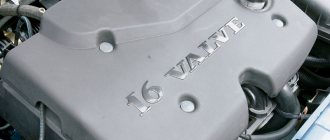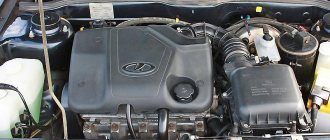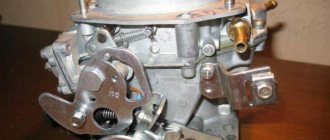The main task of an electric motor is to convert electrical energy into mechanical energy. Today, electric motors are manufactured in both direct and alternating current. Among AC motors, asynchronous and synchronous motors are the leaders. Low and medium power asynchronous motors belong to the group of most commonly used electric motors. They are widely used in both industry and household appliances.
In industry, three-phase asynchronous motors are most often used. They are used, for example, in the energy sector - as drives for the own needs of power plants, in construction, in transport, in public utilities - as drives for water supply pumps, etc.
The difference – briefly in simple words
To put it briefly and in simple words, synchronous and asynchronous motors differ in the design of their rotors. From the outside, it is almost impossible to understand which electric motor is in front of you, except for the presence of additional cooling fins for asynchronous electric motors.
In a device operating on the synchronous principle, a winding with an independent voltage supply is provided on the rotor.
In an asynchronous motor, current is not supplied to the rotor, but is generated using a magnetic stator field. At the same time, the stators of both units are identical in design and have a similar function - creating a magnetic field.
Additionally, in a synchronous motor, the magnetic fields of the stator and rotor interact with each other and have equal speed.
Asynchronous units have short-circuited metal plates or contact rings in the rotor slots, which ensure a difference in the magnetic field of the rotor and stator mechanism by the amount of sliding.
Despite its apparent simplicity, it is unlikely that it will be possible to deal with this issue right away, so we will consider the issue in more detail. Let's talk about the features and differences between asynchronous and synchronous machines.
Positive traits
Like any technical device, SD and asynchronous motors have their strengths and weaknesses. Properties with a plus or minus sign are due to design and technical differences in electrical equipment. Which motor to install for a simple or high-speed electric drive directly depends on how a synchronous motor differs from an asynchronous one. In this regard, the following advantages of SD are highlighted:
- the ability to operate as a generator and provide compensation for reactive power generated by power plants; this ability is especially important for industrial enterprises, since a synchronous generator, working with leading current, increases the power factor of the electrical network, reduces the load on transformers and cables, improves the quality of electricity and, as a result, contributes to better performance from asynchronous motors;
- high efficiency of about 97-98%;
- the ability to change overload parameters through different characteristics of the current feeding the rotor mechanism;
- low sensitivity threshold to voltage drops in the electrical network, which is an important difference from asynchronous electric motors;
- High operational reliability due to large air gap.
IM has its advantages over a synchronous type device and is characterized by:
- a simpler and more reliable design due to the three-phase connection principle and simplified design, understandable for dummies;
- the ability to start directly, while starting a synchronous motor with a direct network connection is impossible;
- economical energy consumption, which means reduced operating costs;
- affordable, relatively low price, how they differ from SD;
- versatility of use, especially in places with variable frequency drives with feedback; in this case, an electronic control device is installed to rotate the asynchronous motor with the required speed;
- the ability to operate from a single- and three-phase network, which allows the use of this motor in places with a lack of developed infrastructure.
A positive aspect of the IM is also the ability to self-start after loss and restoration of power supply. This type of machine is also better in terms of maintenance costs. During operation, it is enough to clean the machine elements from contaminants, stretch the contacts and only after a decade and a half replace the bearings in the engines.
Synchronous motor (SM)
A synchronous motor is a unit with an individual rotor design and a permanent magnet inductor. It features improved characteristics of power, torque and inertia. It has a number of design features and operating principles.
Device
Structurally, it consists of two elements: a rotor (rotates) and a stator (fixed mechanism). The rotor assembly is located inside the stator, but there are designs where the rotor is located on top of the stator.
The rotor contains permanent magnets characterized by increased coercive force.
Structurally, LEDs are divided into two types according to their poles:
- Implicitly expressed. They differ in the same inductance along the transverse and longitudinal axes.
- Explicitly expressed. Transverse and longitudinal inductance have different parameters.
Structurally, rotors come in different designs and designs.
In particular, magnets are:
- Outdoor installation.
- Built-in.
The stator conventionally consists of two components:
- Casing.
- Core with wires.
The winding of the stator mechanism is of two types:
- Distributed. Its difference lies in the number of slots per pole and phase. It ranges from two or more.
- Focused. There is only one number of grooves per pole and phase, and the grooves themselves are distributed evenly over the surface of the stator part. The pair of coils that form the winding can be connected in parallel or in series. The disadvantage of such windings is the impossibility of influencing the EMF line.
The form of electromotive force of an electric synchronous motor is in the form:
- Trapeze. Characteristic of devices with a pronounced pole.
- Sinusoids. It is formed by bevelling the tips on the poles.
Generally speaking, a synchronous motor consists of the following elements:
- assembly with bearings;
- core;
- sleeve;
- magnets;
- armature with winding;
- sleeve;
- “plate” made of steel.
Principle of operation
First, direct current is supplied to the field windings. It creates a magnetic field in the rotor part. The stator of the device contains a winding to create a magnetic field.
As soon as a variable current is applied to the stator winding, a torque is created according to Ampere's law, and the rotor begins to rotate at a frequency equal to the frequency of the current in the stator assembly. In this case, both parameters are identical, which is why the motor is called synchronous.
Rotary EMF is formed thanks to an independent power source, which allows you to change the speed and not be tied to the power of connected consumers.
Taking into account the peculiarities of operation, a synchronous electric motor cannot start on its own when connected to a three-phase current source.
Scope of application
The synchronous type electric motor has a wide range of applications due to its constant rotation speed.
This feature expands the scope of its application:
- energy: sources of reactive power to maintain voltage, maintaining network stability during emergency sags;
- mechanical engineering, for example, in the manufacture of guillotine shears with high impact loads;
- other areas - rotation of powerful compressors or fans, generators at power plants, ensuring stable operation of pumping equipment, etc.
Negative points
A comparative description of the “cons” will allow you to make a full comparison of the types of motors under consideration and finally decide which engine is optimally suited to existing conditions. Regarding the negative aspects, the difference between a synchronous electric machine is:
- more complex design, which affects its cost;
- inconvenience with starting, since the direct-connected synchronous motor is not started;
- limited use, since these types of drives are intended only for equipment with a constant rotation speed and powered from a DC network.
An asynchronous motor differs from a synchronous motor and is characterized by the following disadvantages:
- increased heating of the mechanism, which makes it necessary to increase the cooling area of the case, making it ribbed; Additionally, this allows you to visually distinguish the motor;
- low starting efficiency and increased reactivity, limiting the number of starts in a certain period of time, which distinguishes the asynchronous motor not for the better;
- inability to work at mains voltage less than 220V;
- the occurrence of a “sliding” effect; this is evidenced by the lag of the armature frequency from the magnetic flux of the inductor;
- high current load at the time of start-up, which is the main problem of machines with a power of more than 10 kW; the inrush current value can exceed the rated value by six or eight times and last for 5 - 10 seconds.
Asynchronous motor (IM)
An asynchronous (induction) electric motor having a different frequency of rotation of the magnetic field in the stator and rotor speed. Depending on the type and settings, it can operate in motor or generator mode, XX mode or electromagnetic brake.
Design features
Structurally, asynchronous mechanisms are difficult to distinguish from synchronous ones. They also consist of two main units: a stator and a rotor. In this case, the rotor assembly can be phase or short-circuited. But there are still minor design differences.
Let's look at what an asynchronous motor consists of:
- core;
- fan with housing;
- bearing;
- terminal box;
- triple winding;
- slip rings.
With this in mind, one of the main differences is the absence of windings on the armature (the exception is phase IM). Instead of a winding, the rotor contains rods short-circuited with each other.
Methods for exciting synchronous generators
The most common way to create the main magnetic flux of synchronous generators is electromagnetic excitation, which consists of placing an excitation winding at the rotor poles, when a direct current passes through it, an MMF appears, creating a magnetic field in the generator. Until recently, special independent excitation direct current generators, called exciters B
(Fig. 1.3, a).
The excitation winding ( OB
) receives power from another generator (parallel excitation), called a subexciter (
SA
).
The rotor of the synchronous generator, exciter and subexciter are located on a common shaft and rotate simultaneously. In this case, the current enters the excitation winding of the synchronous generator through slip rings and brushes. To regulate the excitation current, control rheostats are used, connected in the excitation circuits of the exciter r
1 and the subexciter
r
2 . In synchronous generators of medium and high power, the process of regulating the excitation current is automated.
In synchronous generators, a contactless electromagnetic excitation system has also been used, in which the synchronous generator does not have slip rings on the rotor. B is used as an exciter
(Fig. 1.3, b).
The three-phase exciter winding 2
, in which an alternating EMF is induced, is located on the rotor and rotates together with the excitation winding of the synchronous generator and their electrical connection is carried out through a rotating rectifier
3
directly, without slip rings and brushes.
DC power supply of excitation winding 1
of exciter B is carried out from the subexciter
PV
- a direct current generator. The absence of sliding contacts in the excitation circuit of a synchronous generator makes it possible to increase its operational reliability and increase efficiency.
In synchronous generators, including hydroelectric generators, the principle of self-excitation has become widespread (Fig. 1.4, a), when the alternating current energy required for excitation is taken from the stator winding of the synchronous generator and through a step-down transformer and a rectifying semiconductor converter PP
converted to DC energy. The principle of self-excitation is based on the fact that the initial excitation of the generator occurs due to the residual magnetism of the machine.
In Fig. 1.4, b shows a block diagram of the automatic self-excitation system of a synchronous generator ( SG
) with a rectifier transformer (
VT
) and a thyristor converter (
TC
), through which alternating current electricity from the
SG
, after conversion to direct current, is supplied to the excitation winding.
The thyristor converter is controlled by means of an automatic excitation regulator ARV
, the input of which receives voltage signals at the input of
the SG
(through the voltage transformer
TN
) and the load current
of the SG
(from the current transformer
CT
).
The circuit contains a protection unit ( BZ
), which provides protection for the excitation winding (
OW
) from overvoltage and current overload.
The power spent on excitation usually ranges from 0.2 to 5% of the useful power (a lower value applies to high-power generators). In low-power generators, the principle of excitation by permanent magnets located on the rotor of the machine is used. This method of excitation makes it possible to rid the generator of the excitation winding. As a result, the design of the generator is significantly simplified, becoming more economical and reliable. However, due to the high cost of materials for the manufacture of permanent magnets with a large supply of magnetic energy and the complexity of their processing, the use of permanent magnet excitation is limited to machines with a power of no more than a few kilowatts.
Synchronous generators
form the basis of the electric power industry, since almost all electricity throughout the world is generated through synchronous turbo or hydro generators.
Synchronous generators are also widely used as part of stationary and mobile electrical installations or stations complete with diesel and gasoline engines.
Comparison of synchronous and asynchronous motors
In conclusion, we can summarize what are the main differences between asynchronous (AM) and synchronous (SD) motors.
Let's highlight the basic points:
- The rotor of asynchronous motors does not require current supply, and the induction at the poles depends on the stator magnetic field.
- The IM revolutions under load lag by 1-8% from the rotation speed of the stator field. In SD, the number of revolutions is the same.
- The “synchronizer” has an excitation winding.
- Structurally, the rotor of an SD is a magnet: permanent, electric. In IM, the magnetic field in the rotor mechanism is induced using induction.
- A synchronous machine does not have a starting torque, so an asynchronous start is needed to achieve synchronization.
- “Synchronizers” are used in cases where it is necessary to ensure continuity of the production process and there is no need for frequent restarts. IMs are needed where high starting torque is required and frequent stops occur.
- The LED needs an additional current source.
- “Asynchronous” wear out more slowly, because in their design there are no slip rings with brushes.
- As a rule, blood pressure is characterized by a non-round number of revolutions, while SD is characterized by a rounded number.
Which unit is better
In conclusion, it should be noted that it is impossible to say that one motor is better than another. However, asynchronous models are more reliable in operation and are simpler in design. If the units are not overloaded, then the user can be satisfied with their long service life.
The advantage of the synchronous model is that it is easy to set a high power factor. Therefore, the model is much more efficient, but the price will be correspondingly more expensive. The machines are used in systems with a required power of 100 kW or more.
About reactive power
Synchronous electric motors generate and simultaneously consume reactive power. The features and parameters of the “reagent” depend on the current in the exciting winding. At full load, the cosine of Phi is equal to 1. In this mode, the LED does not consume “reagent” from the network, and the current in the stator winding is minimal.
It is important to understand here that reactive power degrades the parameters of the power system. A large parameter of inactive currents leads to increased fuel consumption, increased losses and decreased voltage.
In addition, the “reagent” loads electricity transmission lines, which leads to the need to increase the cross-section of cables and wires, and, accordingly, increase capital costs.
Today, one of the main tasks of power engineers is reactive power compensation. Its main consumers include IM, which consumes 40% of the “reagent,” electric furnaces, converters, power lines and power transformers.
Explanation of the operating principle of a synchronous electric motor for dummies
From childhood we remember that two magnets, if brought closer to each other, in one case attract, and in the other they repel. This happens depending on what sides of the magnets we connect them with, opposite poles attract, and like poles repel. These are permanent magnets in which the magnetic field is constantly present. There are also variable magnets.
There is a drawing in a school physics textbook that shows an electromagnet in the shape of a horseshoe and a frame with half rings at the ends, which is located between its poles.
When the frame is positioned horizontally in the space between the poles of the magnets, due to the fact that the magnet attracts opposite poles and repels like ones, a current of the same sign is supplied to the frame. An electromagnetic field appears around the frame (here is an example of an alternating magnet!), the poles of the magnets attract the frame, and it rotates to a vertical position. When the vertical is reached, a current of the opposite sign is applied to the frame, the electromagnetic field of the frame changes polarity, and the poles of the permanent magnet begin to repel the frame, rotating it to a horizontal position, after which the rotation cycle is repeated.
This is the principle of operation of an electric motor. Moreover, a primitive synchronous electric motor!
So, a primitive synchronous electric motor works when current is supplied to the frame. In a real synchronous electric motor, the role of a frame is played by a rotor with coils of wires, called windings, to which current is supplied (they serve as sources of an electromagnetic field). And the role of a horseshoe magnet is played by a stator, made either from a set of permanent magnets, or also from coils of wires (windings), which, when current is supplied, are also sources of an electromagnetic field.
The rotor of a synchronous electric motor will rotate at the same frequency as the current supplied to the winding terminals changes, i.e. synchronously. Hence the name of this electric motor.
Features and application of different types of electric motors
Each type of engine has advantages and disadvantages compared to others. This determines the scope of their application. The use of different types of electric machines depends on their design features and operating principle.
Advantages and use of asynchronous electric motors
Such machines have advantages over synchronous machines:
- simplicity of design and low price; devices with a wound rotor allow you to adjust the rotation speed and carry out a soft start without the use of frequency converters;
- a wide variety of powers - from several watts to tens of kilowatts.
In addition to the advantages, there are disadvantages:
- drop in rotation speed with increasing load;
- lower efficiency and larger dimensions than synchronous devices of the same power;
- In addition to active power, such devices consume reactive (inductive) power, which leads to the need to install compensators or additionally pay for reactive electricity.
Disadvantages of the electric motor
Experts note two main disadvantages of such electric motors. First of all, this is the complexity of the design. Not the mechanical part, but the electronic base that provides control of the motor. The use of microprocessors, sensors, inverters and related electrical fittings requires an appropriate approach to ensuring the reliability of the system components. Thus, the cost of equipment maintenance also increases. At the same time, the high cost of the magnets on which the valve motor is based, even in simple single-phase versions, is also noted. In practice, users try to replace expensive elements and consumables, while at the same time simplifying the control system. But such measures themselves require certain resources, not to mention the fact that engine efficiency decreases.
comparison table
Let's compare both types of engine according to the main parameters.
| Synchronous | Asynchronous | |
| rotor and magnetic field speed | the same | unequal |
| design | complex | simplified |
| functional power | from 100 kW | less than 100 kW |
| sensitivity to voltage surges | No | Yes |
| operation with frequent switching on and off | No | Yes |
| price | high | relatively low |
DIFFERENCE IN APPLICATION
Synchronous motors, unlike asynchronous motors, have a more complex design and higher price, but have improved performance characteristics:
- the rotation speed is more stable and does not have a pronounced dependence on the load on the shaft and the level of mains voltage;
- higher overload capacity;
- motors with automatic regulation of excitation current are capable of maintaining optimal voltage in the network.
Asynchronous ones consume, along with active energy, a large amount of reactive energy, which is transported along the lines along with the active component, increasing losses.
In large consumption nodes this leads to a shortage of reactive power and a significant voltage drop. In this case, capacitor banks or synchronous compensators are used to generate reactive power.
The use of SD instead of IM solves this problem, since synchronous motors can operate in a wide range of cos φ values, not only without consuming reactive power, but also delivering it to the electrical network.
© 2014-2021 All rights reserved. The materials on the site are for informational purposes only, may express the opinion of the author and are not to be used as guidelines or normative documents.











